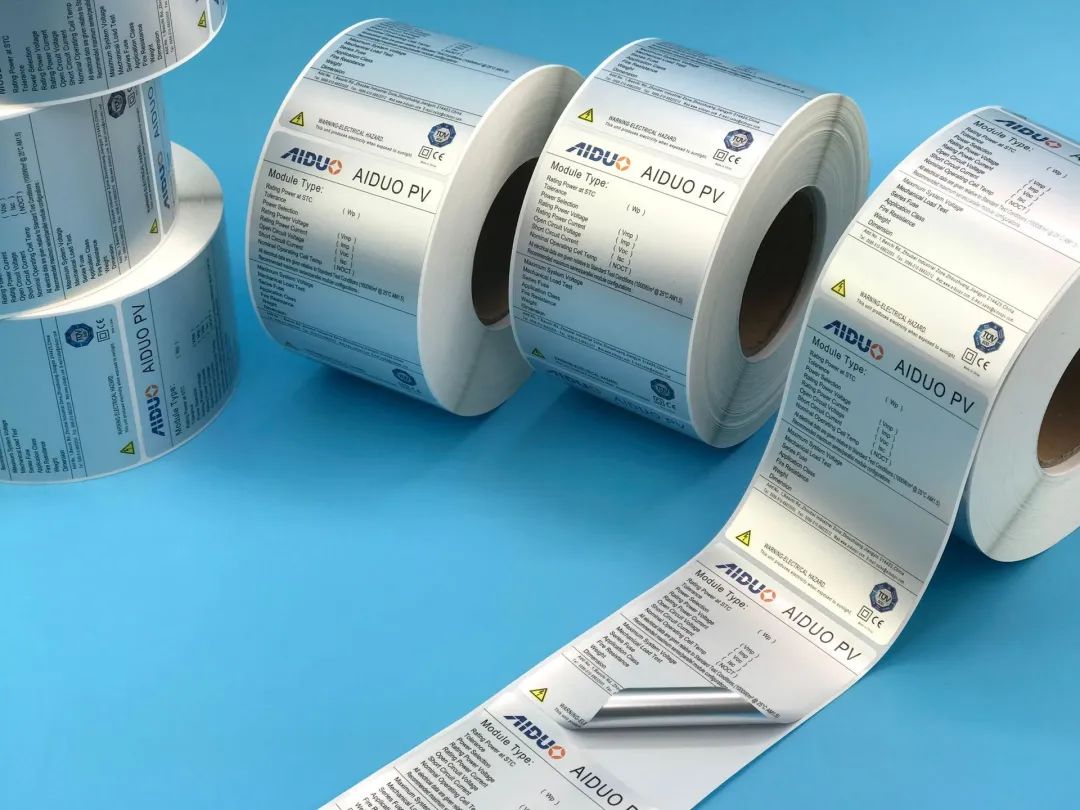In the process of processing, printing and labeling of self-adhesive labels, static electricity can be said to be everywhere, which brings great trouble to the production personnel. Therefore, in the production process, we must correctly understand and adopt appropriate methods to eliminate static electricity problems, so as not to cause unnecessary trouble.
The main reason for electrostatic is friction, that is, when two solid materials contact and move away quickly, one material has a large ability to absorb electrons to transfer to the surface of the material, making the surface of the material appear negative charge, while the other material appears positive charge.
In the printing process, due to friction, impact and contact between different substances, the self-adhesive materials involved in printing are likely to produce static electricity. Once the material produces static electricity, especially thin film materials, it is often found that the printing edge is burr and overprint is not allowed due to ink overflow when printing. In addition, ink by electrostatic impact will produce shallow screen, missed printing and other phenomena, and film and ink adsorption environment dust, hair and other foreign bodies prone to knife wire quality problems.
Methods of eliminating static electricity in printing
Through the above content on the electrostatic cause of a full understanding, then there are many ways to eliminate static electricity, among which, the best way is: in the premise of not changing the nature of the material, the use of static electricity itself to eliminate static electricity.
1, grounding elimination method
Usually, in the installation process of printing and labeling equipment, metal conductors will be used to connect the material to eliminate static electricity and the earth, and then through the earth isopotential to eliminate the static electricity generated during the operation of the equipment. It should be said that this approach tends to have no effect on insulators.
2, humidity control elimination method
Generally speaking, the surface resistance of printing materials decreases with the increase of air humidity, so increasing the relative humidity of air can improve the conductivity of the material surface, so as to effectively eliminate static electricity.
Normally, printing workshop environment temperature is 20 ℃ or so, environment humidity is about 60%, if the processing equipment of electrostatic eliminating function is insufficient, can improve production workshop environment humidity appropriately, such as humidifying equipment installed in a printing shop, or the use of the artificial ground wet mop clean workshop and so on all can increase environment humidity, thus effectively eliminate static electricity.
The picture
If the above measures still cannot completely eliminate static electricity, we suggest that additional equipment can be used to eliminate static electricity. At present, electrostatic eliminator with ionic wind is widely used, convenient and fast. In addition, we can also install in addition to electrostatic copper wire to remove the accumulation of electrostatic charge on the printing material, so as to ensure better printing, die cutting, film coating, rewinding effect.
Install the electrostatic removing copper wire as follows:
(1) Ground the processing equipment (printing, die-cutting or labeling equipment, etc.);
(2) It should be noted that in addition to the electrostatic copper wire, the wire and cable need to be connected to the ground separately. In addition to electrostatic copper wire can be fixed on the machine equipment through a bracket, but in order to get better in addition to electrostatic effect, the connection part with the machine needs to use insulating materials, and in addition to electrostatic copper wire can best be with the direction of the material into a certain Angle;
(3) in addition to the installation position of electrostatic copper wire needs to meet the following requirements: the distance from the material is 3~5mm, with no contact is appropriate, the opposite side of the copper wire needs to be a relatively open space, especially to avoid the electrostatic device installed on the opposite side of the metal layout;
(4) The wire is grounded to the prepared grounding pile, which needs to be driven into the wet layer of the soil, and it needs to be driven into a certain depth according to the actual local soil layer;
(5) The final electrostatic effect is confirmed by instrument measurement.
Post time: Sep-29-2022

